CIMMYT E-News, vol 5 no. 5, May 2008
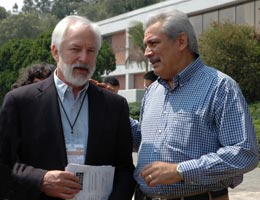 Skyrocketing food prices recently brought Latin American agriculture ministers from 14 countries and development experts to CIMMYT to seek a way forward for a region characterized by serious rural poverty.
Skyrocketing food prices recently brought Latin American agriculture ministers from 14 countries and development experts to CIMMYT to seek a way forward for a region characterized by serious rural poverty.
On 26 May 2008, ministers of agriculture and government officials from Belize, Bolivia, Costa Rica, Cuba, the Dominican Republic, Ecuador, El Salvador, Guatemala, Haiti, Honduras, Mexico, Nicaragua, Panama, and Venezuela, as well as representatives of international organizations working in agricultural development and the Mexican media—more than 70 persons in all—visited CIMMYT’s headquarters in Mexico to learn about the center’s work and discuss collaborative strategies for addressing the food price crisis. The visit was part of a two-day summit organized by Mexico’s agriculture (SAGARPA) and foreign relations (SRE) ministries, following up on recommendations from a regional summit on the same topic in Nicaragua earlier this month.
Speaking on behalf of the Alliance of Centers of the Consultative Group on International Agricultural Research (CGIAR) in his welcoming talk, CIMMYT Director General Tom Lumpkin emphasized the need to move from the present emergency to a permanent vision for addressing the crisis. “It appears that two decades of complacency about basic food production has finally given way to a sense of urgency,” Lumpkin said. “We must now transform that urgency into a long-term vision, making sensible investments in agricultural research and extension to provide food for our children and our grandchildren.”
Have policy makers forgotten small-scale farmers?
The rising cost of food is being felt around the world, especially by poor people in rural zones. Though often not on the radar screens of policymakers, the rural poor are numerous. A recent paper from the International Food Policy Research Institute (IFPRI) says there are more than 400 million small farms in developing countries, and that these are home to most of the world’s hungry and disadvantaged. In Latin America and the Caribbean, nearly 64% of the rural population lives below the poverty line, according to a report by the International Fund for Agricultural Development (IFAD). Over the last two decades, the number of poor people in rural areas in the region has increased in both absolute and relative terms, the report says.
SAGARPA and CIMMYT undertake new, joint projects
As the meetings closed, Lumpkin urged “…the governments of Mexico and other countries in the region to re-examine their relationship with CIMMYT and bring new backing for research to increase food production and farm productivity.” In the week following the visit and at the invitation of Mexico’s Secretary of Agriculture, Alberto Cárdenas Jiménez, the center has submitted proposals for joint SAGARPA-CIMMYT work to develop, test, and disseminate drought tolerant maize varieties, as well as management practices that reduce small-scale farmers’ losses of stored maize grain to insect pests.
For more information: Rodomiro Ortiz, Director, Resource Mobilization (r.ortiz@cgiar.org)
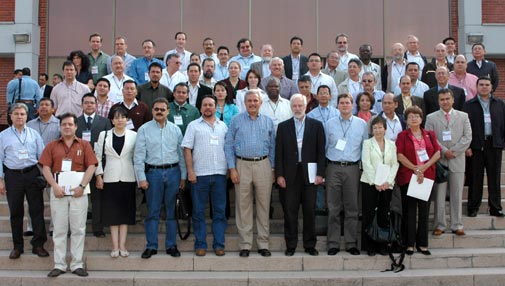
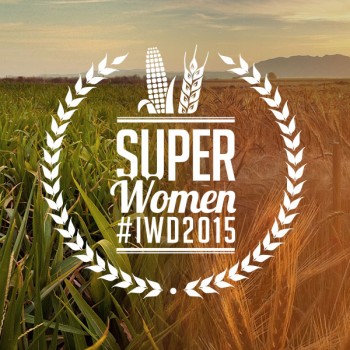 EL BATAN, Mexico (CIMMYT) – A social media crowd sourcing campaign initiated to celebrate the achievements of women has led to more than a dozen published blog story contributions about women in the maize and wheat sectors.
EL BATAN, Mexico (CIMMYT) – A social media crowd sourcing campaign initiated to celebrate the achievements of women has led to more than a dozen published blog story contributions about women in the maize and wheat sectors.

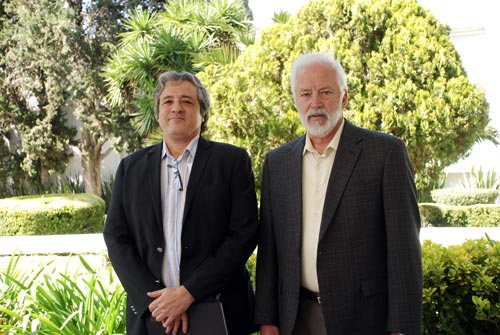
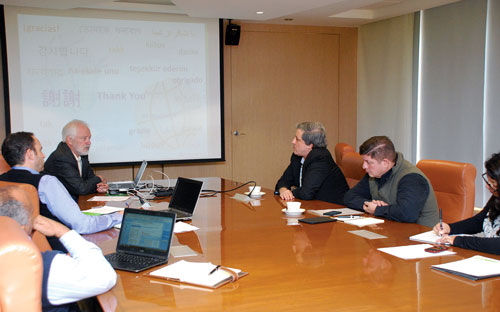
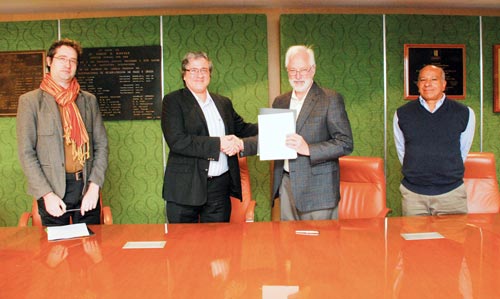
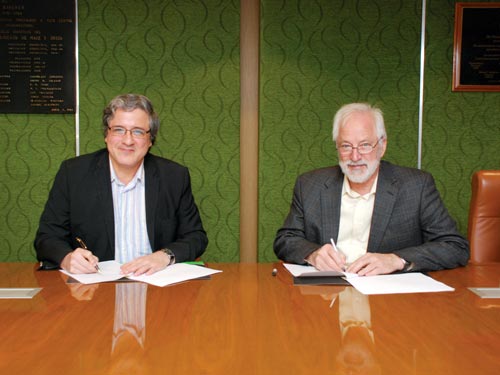
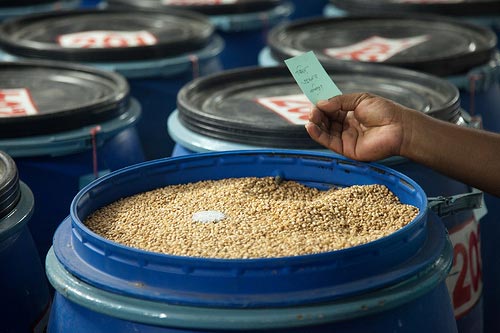 The 2nd Latin American Convention on Airtight Storage sponsored by the global company GrainPro, Inc was held during 1-2 March 2013 in Antigua, Guatemala. More than 50 participants from Brazil, Ecuador, Colombia, Costa Rica, Honduras, El Salvador, Guatemala, Mexico, and the USA, and other countries attended the event.
The 2nd Latin American Convention on Airtight Storage sponsored by the global company GrainPro, Inc was held during 1-2 March 2013 in Antigua, Guatemala. More than 50 participants from Brazil, Ecuador, Colombia, Costa Rica, Honduras, El Salvador, Guatemala, Mexico, and the USA, and other countries attended the event. Skyrocketing food prices recently brought Latin American agriculture ministers from 14 countries and development experts to CIMMYT to seek a way forward for a region characterized by serious rural poverty.
Skyrocketing food prices recently brought Latin American agriculture ministers from 14 countries and development experts to CIMMYT to seek a way forward for a region characterized by serious rural poverty.